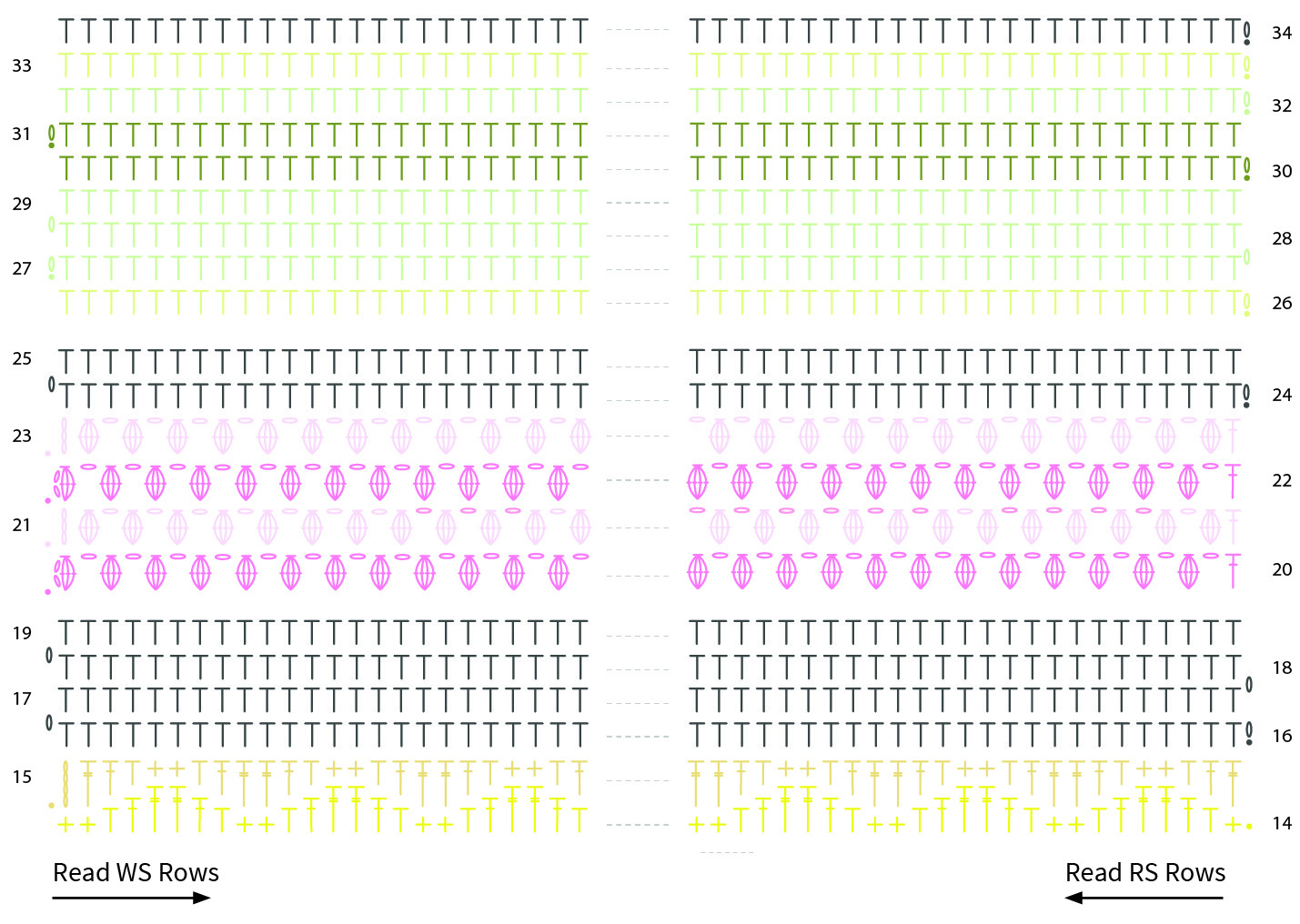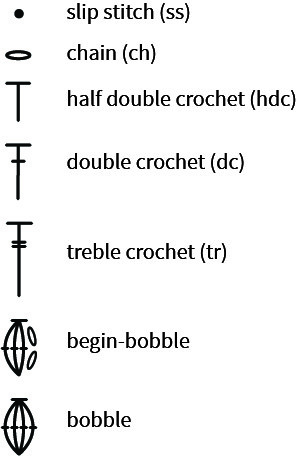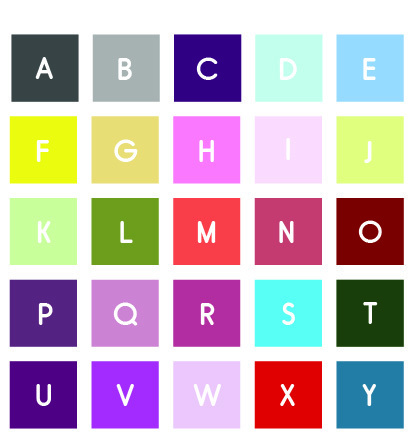Rainbow Sampler Blanket (Part 2)
13.May.20 / Kirsten BalleringMaterials and preparation
You can find all information about yarns and hook sizes in the pattern of week 1.
Yarn
Shop the yarn!
You can find Scheepjes Colour Crafter via your local Scheepjes retailer or order online in these webshops:
Notes
- You can find general information and the patterns for the previous weeks for this CAL here.
- Yarn amounts used in Week 2:
- Colour A: 39g
- Colour F: 9g
- Colour G: 9g
- Colour H: 33g
- Colour I: 33g
- Colour J: 9g
- Colour K: 29g
- Colour L: 13g
Abbreviations (US terms)
- begin-bobble: ch2, (yarn over, insert hook in stitch, yarn over, pull up loop, yarn over, pull through two loops on hook) 3x in the same stitch, yarn over, pull through all loops on hook
- bobble: (yarn over, insert hook in stitch, yarn over, pull up loop, yarn over, pull through two loops on hook) 4x in the same stitch, yarn over, pull through all loops on hook
- ch: chain
- ch-space: chain space: the space below the chain of the previous row
- dc: double crochet
- hdc: half double crochet
- RS: Right side
- sc: single crochet
- ss: slip stitch
- st(s): stitch(es)
- tr: treble crochet
- WS: Wrong side
Repeat formats
- *….; rep from * once/twice/3x Crochet the instructions after * and then repeat that section a further number of times as indicated.
- (…) once/twice/3x Crochet the instructions between brackets the total number of times indicated.
- […] Indicates the amount of stitches at the end of a row or round.
- (…) in same st/sp Indicates that all instructions between brackets are worked in the same stitch or space.
Techniques
Wave stitch
Click here for the tutorial about the Wave stitch.
Bobble stitch
Click here for the tutorial about the Bobble stitch.
Crochet pattern
Wave section 1 (Rows 14-19)
These waves are a great way to shake things up a bit. And although we only crochet two wave rows, I’m sure you can imagine how a whole blanket in this pattern would look like!
While you work your first row of waves, your blanket might look a bit wobbly. That actually makes sense, when you think about it. The stitches in one wave repeat varying in height. The nature of crochet is that the top of the stitches want to align themselves as much as possible. Due to the variety in height, the bottom of your stitches (and thus the rest of the blanket) will try and form a wave. This will be sorted out when you crochet the second row of waves. This row is the exact opposite of the first row in terms of height, and thus the forces that pull on the blanket cancel each other out, resulting in a straight wave.
Row 14 (RS) Join Colour F with a ss in first st, 1sc in same st, *1hdc, 1dc, 2tr, 1dc, 1hdc, 2sc; repeat from * another 29 times, cut yarn, turn. [1 sc, 30 waves consisting of 1 hdc, 1 dc, 2 tr, 1 dc, 1 hdc, 2 sc]
Row 15 (WS) Join Colour G with a ss in first st (which is the last sc of the previous row), ch4 (counts as first treble), 1tr, *1dc, 1hdc, 2sc, 1hdc, 1dc, 2tr; repeat from * another 28 times, 1dc, 1hdc, 2sc, 1hdc, 1dc, 1tr, cut yarn, turn. [2 tr, 29 waves consisting of 1 dc, 1 hdc, 2 sc, 1 hdc, 1 dc, 2 tr and 1 wave consisting of 1 dc, 1 hdc, 2 sc, 1 hdc, 1 dc, 1 tr]
Row 16 (RS) Join Colour A with a ss in first st, ch1, 1hdc in same st, 240hdc, ch1, turn. [241 hdc]
Row 17 (WS) 241hdc, ch1, turn. [241 hdc]
Row 18 (RS) 241hdc, ch1, turn. [241 hdc]
Row 19 (WS) 241hdc, cut yarn, don’t turn. [241 hdc]
Bobble section 1 (Rows 20-25)
Bobbles are one of several ways to get a slight ‘bump’ in your blanket. In previous rows, we’ve made popcorns. Bobbles are a form of popcorns, but you don’t crochet the stitches together with a slip stitch. Instead, you depend on the height of the individual stitches and the tightness of the stitch to pull the excess yarn forward and make a ‘bump’.
Don’t be alarmed if your bobble stitches don’t really pop. Bobbles only tend to pop if they’re crocheted in between other tight stitches such as single crochets, and have nowhere to go but forward or backwards. Because we’ll be skipping stitches, our bobbles will form a small raise on the backside rather than turn into voluminous bobbles. Because we’re working them on the wrong side, the bobbles will pop to the front. If you can’t get them to pop, they’ll take the shape of little flower petals. In any case, it’s a beautiful stitch to try!
Please note: you’re working these stitches on the WS again, so don’t turn after your previous row.
Row 20 (WS) Join Colour H with a ss in first st, begin-bobble, ch1, skip 1 st, *bobble, ch1, skip 1 st; repeat from * another 117 times, 1 bobble, skip 1 st, 1dc in final st, cut yarn, don’t turn. [1 begin-bobble, 119 bobbles, 120 ch-1 spaces, 1 dc]
Your blanket should be able to lay flat while you work on this row. If your blanket starts to wobble a little bit this means that there are too many stitches for your blanket to fit into a straight line. While this can be sorted out to a small degree with blocking (in week 11), we’re not going to bet on that.
If you think it’s too wobbly, adjust your bobble a bit. Instead of 4 stitches per bobble, you’ll make 3 stitches per bobble, like this: (yarn over, pull up loop, yarn over) in the same stitch 3 times, yarn over, pull through all loops on hook. This goes for all the next bobble rows in this section too.
The reason why we don’t turn this row is because bobbles are visible on one side and not as much on the other. If you would turn to work your next row, you would see the backs of the bobbles and we want them pointing all to the same side.
Row 21 (WS) Join Colour I with a ss in first stitch on the wrong side (your begin-bobble), ch3 (counts as first dc), bobble in ch-space between bobbles of previous row, *ch1, bobble in next ch-space; repeat from * another 118 times, 1dc in final st, cut yarn, don’t turn. [2 dc, 120 bobbles, 119 ch-1 spaces]
Row 22 (WS) Repeat Row 20, make sure to crochet in between the stitches of the previous row as you did in Row 21. [1 begin-bobble, 119 bobbles, 120 ch-1 spaces, 1 dc]
Row 23 (WS) Repeat Row 21, turn. [2 dc, 120 bobbles, 119 ch-1 spaces]
You’ll find that the bobble stitch uses a lot of yarn compared to other stitches. And it makes sense when you think about it. For every 2 stitches in the previous row, you make 4 double crochets. So that’s twice as many stitches and twice as much yarn if you disregard the chains in between stitches for convenience. It’s a yarn eater but creates a soft, textured stitch.
Row 24 (RS) Join Colour A with ss in first stitch, ch1, 1hdc in same st, *1hdc in next bobble, 1hdc in next ch; repeat from * another 118 times, 1hdc in next bobble, 1hdc in final dc, ch1, turn. [241 hdc]
I recommend crocheting in the chains between the bobbles, instead of crocheting over it. In my opinion, the end result will be neater. If you find this too cumbersome, then just crochet around it. It will not matter for the stitch count.
Row 25 (WS) 241hdc, cut yarn, turn. [241 hdc]
Stripes section 1 (Rows 26-34)
This section consists of hdc rows only, making for great TV-crochet. Let the rhythm of the stitches guide you, and you’ll see that you got this section finished before you know it.
Row 26 (RS) Join Colour J with a ss in first st, ch1, 1hdc in same st, 240hdc, cut yarn, turn. [241 hdc]
Row 27 (WS) Join Colour K with a ss in first st, ch1, 1hdc in same st, 240hdc, ch1, turn. [241 hdc]
Row 28 (RS) 241hdc, ch1, turn. [241 hdc]
Row 29 (WS) 241hdc, cut yarn, turn. [241 hdc]
Row 30 (RS) Join Colour L with a ss in first st, ch1, 1hdc in same st, 240hdc, ch1, turn. [241 hdc]
Row 31 (WS) 241hdc, cut yarn, turn. [241 hdc]
Row 32 (RS) Join Colour K with a ss in first st, ch1, 1hdc in same st, 240hdc, cut yarn, turn. [241 hdc]
Row 33 (WS) Join Colour J with a ss in first st, ch1, 1hdc in same st, 240hdc, cut yarn, turn. [241 hdc]
Row 34 (RS) Join Colour A with a ss in first st, ch1, 1hdc in same st, 240hdc, cut yarn, turn. [241 hdc]
Continue with part 3 of the Sampler Blanket Pattern.
Diagram
Crochet Diagram Week 2

Key Week 2

Yarn colours





Comments
Looking forward to finally finishing a blanket. This will be my first one!
Toni Rumbel July 09, 2020 11:53 - Reply
Then move your blanket back and start a new row like you would typing on a typewriter.
Simply keep the blanket facing the same way it was and start a new row with the new colour right above the first stitch of the last row.
Imagine your blanket as
You just crocheted
XxxxxxxxxxxxxxxxxY
XxxxxxxxxxxxxxxxxY
XxxxxxxxxxxxxxxxxY
Restart each new row on the x
Not x y x January 17, 2022 23:39 - Reply
I’m a beginner but managing ok so far (I think !) though I seem to have lost some stitches somewhere along the line! My question is this - in the videos/tutorials I watch, they usually say something like ‘for double crochet always start in the 4th chain/stitch” - should I be doing that every new row ? Or just assume it’s the first stitch unless you have specifically said something different ? Thank you February 10, 2021 18:04 - Reply